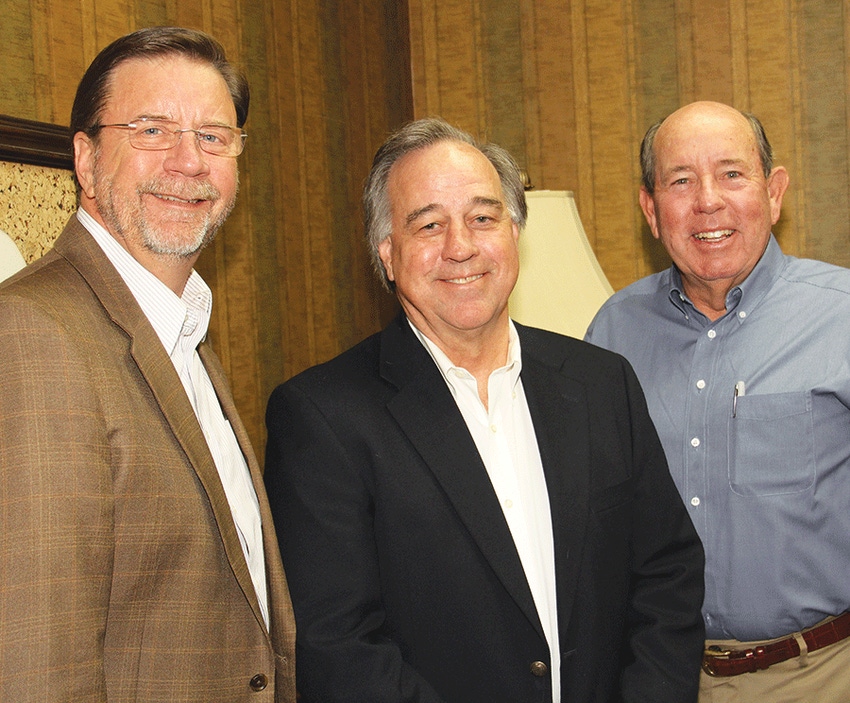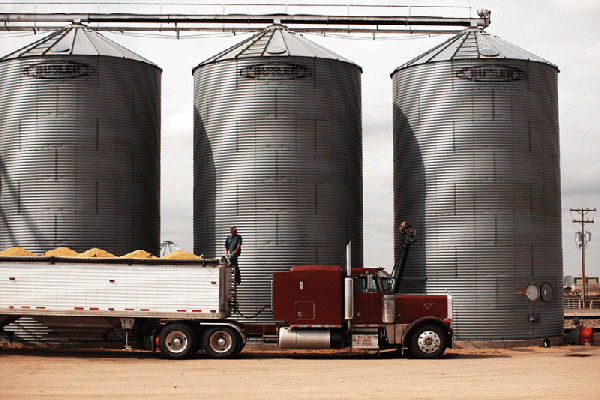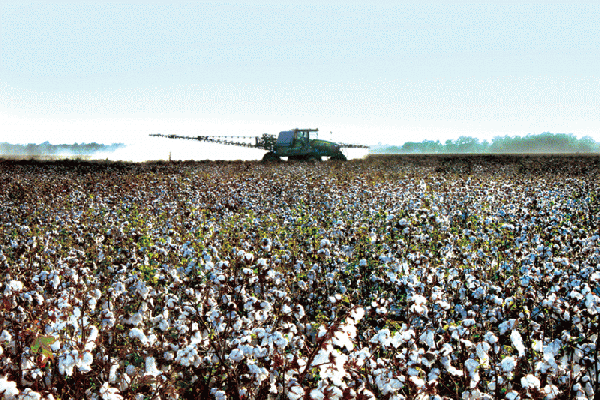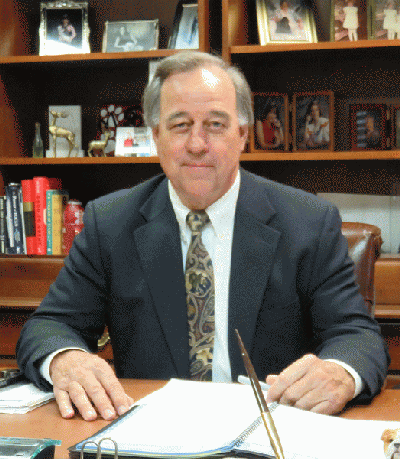
Farmers on sounder financial footing now than in 1980s crisis, ag banker says
"Farmers today know agriculture is cyclical, and they’ve prudently put money away for the downturn they knew would eventually come. If land values do drop significantly, a lot of them will be buyers at a level that’s attractive to them.”

While some see today’s environment of low commodity prices and high land values as similar to conditions in the 1980s that, along with record high interest rates, led to the national crisis in agriculture that forced more than a quarter million farms out of business during the decade, Mississippi ag banker Gary Gaines says things are different now.
“I don’t think we’re in the same situation today, despite low commodity prices and a generally poor profit potential,” says Gaines, who retired at the end of January as president and chief executive officer of Mississippi Land Bank.
In his 43-year career in the Farm Credit system, he has seen the good and the bad, the boom and the bust, the transition of farming from manual labor and simple machinery to technology-laden equipment with sub-inch accuracy and unparalleled efficiency, varieties boasting yield record potential, and digital devices/software that can track every aspect of a modern farm’s operations.
IT’S FREE! Stay informed on what’s happening in Mid-South agriculture: Subscribe to Delta Farm Press Daily.

Willie Nelson began his Farm Aid concerts in support of American agriculture during the farm crisis of the 1980s, and held a 30th anniversary concert in 2015.—Getty Images/Taylor Hill
Willie Nelson began his Farm Aid concerts in support of American agriculture during the farm crisis of the 1980s, and held a 30th anniversary concert in 2015.—Getty Images/Taylor Hill“Unlike the 1980s, today’s commercial farmers are, for the most part, in sound condition,” Gaines says. “They’re excellent managers, they’re efficient, they’ve incorporated technology to operate with less labor, they’ve invested money in precision leveling and irrigation, and in the last three or four years we’ve seen considerable investment in on-farm storage to allow more flexibility in marketing of crops.”
And contrasted with the 1980s, when farmers were following then Secretary of Agriculture Earl Butz’ advice to “get big or get out,” expanding with mostly borrowed money and interest rates that reached as high as 21 percent, Gaines says today’s farmers have expanded operations only as they could afford it, often paying cash for land acquisitions. “And importantly, they know agriculture is cyclical, and they’ve prudently put money away for the downturn they knew would eventually come. If land values do drop significantly, a lot of them will be buyers at a level that’s attractive to them.”
With today’s improved varieties and good management, he says, 300 bushel corn and 80 bushel to 100 bushel soybeans have become almost commonplace. “With early-maturing varieties, farmers can produce crops on a more timely basis, but they need a significant amount of equipment to take advantage of a narrow planting window. Among the biggest risks farmers contend with today are delayed planting and heavy rains during harvest season.”
Land prices holding mostly steady
With the current downturn in commodity prices, Gaines says, “We haven’t seen any significant drop in land values in our 32-county north Mississippi territory. There have been a few instances in which land rents have been reduced. If commodity prices continue low, I expect in the next couple of years we will begin seeing some reduction in land values.

Today’s commercial farmers, says Gary Gaines, are excellent managers who have incorporated technology to operate with less labor, invested money in precision leveling and irrigation, and in the last three or four years have made a considerable investment in on-farm storage to allow more flexibility in marketing of crops.—Getty Images/Spencer Platt
Today’s commercial farmers, says Gary Gaines, are excellent managers who have incorporated technology to operate with less labor, invested money in precision leveling and irrigation, and in the last three or four years have made a considerable investment in on-farm storage to allow more flexibility in marketing of crops.—Getty Images/Spencer Platt“We actually aren’t seeing that many sales of farmland. Row crop land now is selling in a range of $2,800 per acre for heavier type soils to as high as $5,000-plus for high quality irrigated land. On heavier land, if it has been precision leveled, prices can run $4,000-plus per acre.”
Ag banking has changed, too, Gaines notes. Between 1983 and 1985, the proportion of agricultural bank failures more than quadrupled, going from 12.5 percent of all bank failures to 51.7 percent, with the heaviest concentration in the Midwest states and Texas, but the Mountain and Delta states were also hard hit. Bankers became more cautious, significantly tightening credit requirements and carefully analyzing a farmer’s operation to see if there was sufficient cash flow to meet loan payments.
In 1989, Gaines who had worked for 17 years at Land Bank offices in Jackson, Miss., Senatobia, Miss., and New Orleans, returned to the Senatobia bank to oversee a total reorganization into the present 32-county district.
“Coming out of the 1980s, the Senatobia district had $125 million in loans — a large percentage of which was non-accrual loans,” he says. “As was the case with all agricultural financial institutions, we had to work through a lot of bad loans. There were a lot of bankruptcies and foreclosures.
“It took four or five years to work through all that, during which time we couldn’t really concentrate on new loans — not that there was that much demand for new loans, when a lot of farmers were struggling just to stay afloat. But then things finally turned around, and we haven’t looked back since. We closed 2015 with over $600 million in loans, only about $2 million of which were non-accrual, and a credit quality of 99.5 percent — which is outstanding.”
A revolution in farming
Looking back on his four decades-plus in ag banking, Gaines says, “I could not have imagined what an interesting, fascinating career it would be. I started with the Farm Credit system after graduating from Mississippi State University in 1973, and it’s the only full-time job I’ve ever had.”
Farming had been a constant in his growing-up years. “My father was a farm manager for King and Anderson, a large farming operation at Clarksdale, Miss., and during the summers I chopped cotton, drove tractors, and did other farmwork.

In his 43-year career in the Farm Credit system, Gary Gaines has the transition of farming from manual labor and simple machinery to agri-chemicals and technology-laden equipment.
In his 43-year career in the Farm Credit system, Gary Gaines has the transition of farming from manual labor and simple machinery to agri-chemicals and technology-laden equipment.“When I finished at MSU with a business degree and a lot of ag electives, farming was still mostly plowing, hoeing, and labor intensive practices. Treflan was just beginning to become a part of the long line of herbicides that would help revolutionize farming. Then came the trend to ever larger farm machinery, and continuing improvement of varieties that offered higher yields.”
Gaines recalls that the job application process with the Farm Credit Land Bank involved an intensive interview process at several levels, ending at the district bank in New Orleans. “There was a formal interview with the bank’s president, at which an applicant’s wife was also expected to participate. Today, hiring is done at the local branches.
“I was fortunate enough to be hired, and began my career at the Jackson, Miss., district bank. I was there for three years, then in New Orleans for three years. After that, I spent four years at Senatobia, then returned to Jackson to coordinate field operations for the district. I came back to Senatobia in 1989, and have been here ever since.
“When I started with the Land Bank system, the district covered Louisiana, Mississippi, and Alabama, and included 33 associations. With mergers and consolidations over the years, there are now five associations in the three states. In 1986, the district headquarters was relocated from New Orleans to Jackson.”
Mississippi Land Bank is a part of the nationwide Farm Credit System, a financial cooperative owned by its member-borrowers, who share in the profits generated from lending activity.
"The time was right"

After the farming crisis of the 1980s, ag bankers became more cautious, says Gary Gaines, significantly tightening credit requirements and carefully analyzing a farmer’s operation to see if there was sufficient cash flow to meet loan payments.
After the farming crisis of the 1980s, ag bankers became more cautious, says Gary Gaines, significantly tightening credit requirements and carefully analyzing a farmer’s operation to see if there was sufficient cash flow to meet loan payments.“After five consecutive record-setting years of growth, and as we approach our 100th Anniversary, the timing just felt right to retire,” Gaines says. “I’ve loved my time with Mississippi Land Bank, but I’m also looking forward to some time off while I decide what life holds for me next — relax for a while and look at possibilities.
“My wife, Vera, and I have a 160-acre farm in Noxubee County, Miss., where we’ve had a cabin for many years. We’ve expanded that and will relocate there. We’re both Mississippi State University alumni, and we’ll be only about 20 minutes from the campus, so we look forward to being a part of the activities there.
“I’m sure the Good Lord has plans for me that will be revealed, and I don’t expect to spend a lot of time sitting around. One of the talents He has given me is being able to look at a piece of land and see the potential in it, and I expect to continue making use of that talent in some capacity. I still enjoy getting on a bulldozer or trackhoe and doing work on the farm. We also will continue to be active in the Methodist Church.”
The Gaines have two daughters, Heather Hardison, who has a clinical psychology practice at Collierville, Tenn., and Tiffany Lambert, who has a graphic arts business at Olive Branch, Miss.
Craig Shideler, the bank’s executive vice president, a 37 year veteran with the organization, will succeed Gaines as president/CEO. “I’ve had the great fortune to learn so much from my good friend and colleague,” Shideler says, “and I’m excited for the opportunity to build on all of his successes.”
Abbott Myers, Dundee, Miss., farmer and chairman of the board, says, “Under Gary’s leadership and guidance, Mississippi Land Bank has grown in reputation and financial strength, becoming a premier bank in the Farm Credit system and servicing the financial needs of rural and agricultural life. Our stockholders and customers have been truly blessed by his knowledge, skills, and abilities.”
About the Author(s)
You May Also Like



